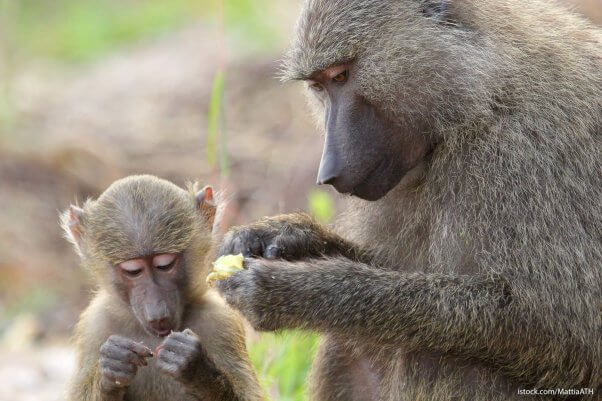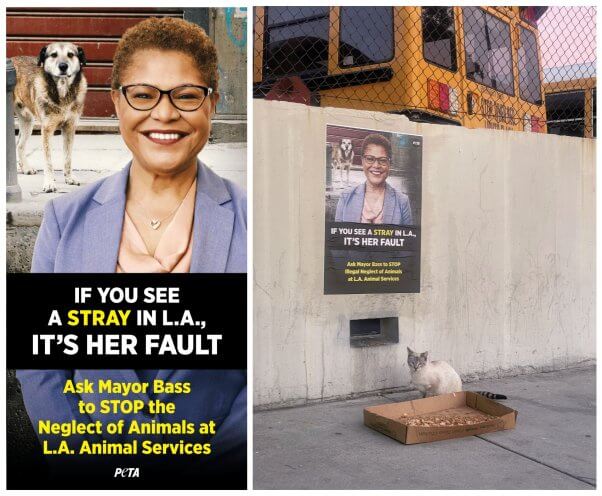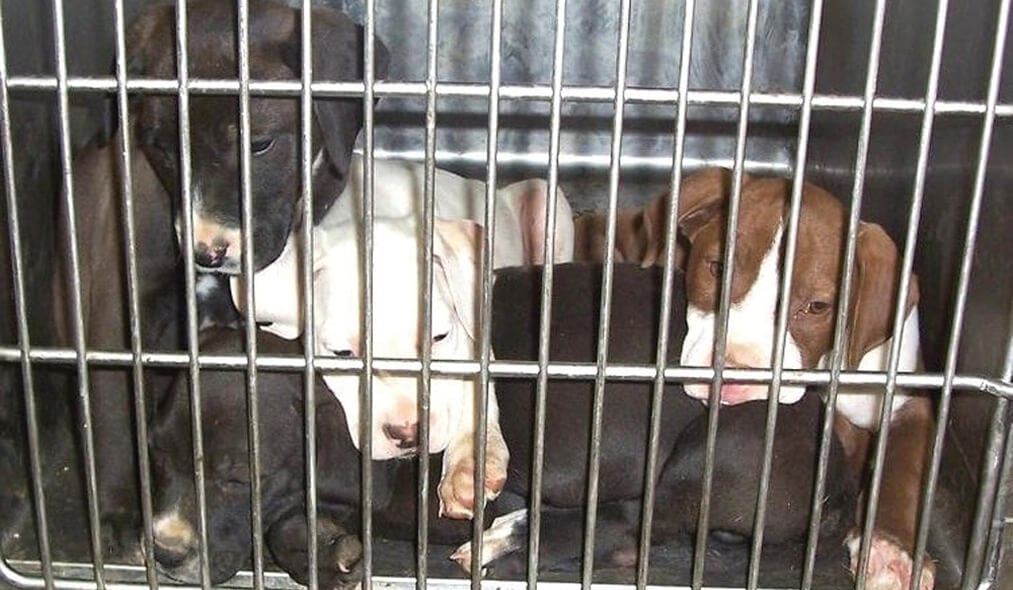For 40 years, Eastern Virginia Medical School (EVMS) has been impregnating baboons, shooting them full of various hormones, and then cutting out and killing the fetuses. Nothing from this horror show has ever helped humans, but that hasn’t stopped the experimenters—or the funding from the National Institutes of Health (NIH). PETA is calling for an immediate end to these experiments as well as for the release of the primates to a sanctuary.
Our effort has just been boosted by the U.S. Department of Agriculture (USDA), which has taken a rare action that reveals just how sick this study is: The agency has revoked EVMS’ permission to subject the pregnant olive baboons to up to six separate major surgeries.
Under the federal Animal Welfare Act, it’s illegal for experimenters to subject an animal to more than one major, invasive surgery from which the animal is allowed to recover (called a “survival surgery”) without scientific justification and permission from federal authorities. But the USDA caught EVMS performing multiple surgeries on the baboons—all without permission. In 2021, the agency cited the school for it. EVMS then asked for an exemption so experimenters could continue to subject the baboons to “major survival surgeries” over and over again.
The USDA granted EVMS the exception, with two small, straightforward stipulations:
1. Surgeries must be performed in accordance with the experiment.
2. The school’s laboratory oversight committee must evaluate the animals’ well-being and the methods and procedures at least every six months.
The USDA, in another unusual move, also notified NIH of the school’s federal animal welfare violations, stating, “[T]he study in question raises concerns about animal health and well-being.”
EVMS proved that it could not or would not comply with the stipulations. The USDA again cited the school in May 2023, after a baboon named Jemma was administered a drug and was then found unresponsive in her cage—and EVMS staff failed to help her. The USDA then withdrew its approval for the school’s surgery exception. No additional major survival surgeries can be performed on the five female baboons who are part of the study, including Jemma.
The following month, NIH issued the school a rare warning, saying the agency wouldn’t pay for any expenses from “these non-compliant activities.”
In EVMS laboratories, intelligent and sensitive baboons are confined to small, barren steel cages, where they display profound psychological distress through stereotypical behaviors like pacing, biting cage bars so desperately that they wear their teeth down, over-grooming, and self-mutilation.
Jemma’s Story
Jemma was 6 years old when she arrived at EVMS from the Southwest National Primate Research Center in 2011. Caged in near-constant isolation and deprived of everything that’s natural and important to her species, she began pulling out her hair and biting on cage bars—behaviors indicative of extreme psychological distress. Records reveal the extent of her suffering, documenting skin lesions, genital tears, and traumatic injuries, including missing fingers. She found solace briefly when one of the many babies she was forced to carry by experimenters, a male named Boo, was with her for a few short months. But Boo was taken from his mother in 2018, at just 8 months of age, after which Jemma resumed self-harming.
In 2019 and 2020, Jemma was subjected to two cesarean sections, both performed in the first trimester of her pregnancies. Just one year later, she was impregnated again. She was injected daily with a drug known to induce seizures in animals, and on at least one occasion, a lab worker found her unresponsive after the drug was administered. Procedures outlining what should be done in such an emergency were allegedly in place, but there are no records to indicate that they were followed. There are no records showing that Jemma received any veterinary treatment at all. She recovered from the seizure and then underwent a third C-section two days later. This one was performed “near term,” and her female baby was killed after the surgery.
As far as we know, Jemma remains imprisoned at EVMS.
Hundreds of Corpses
Since 1980, experimenters Gerald Pepe (currently at EVMS) and Eugene Albrecht (currently at the University of Maryland–Baltimore) have used olive baboons to purportedly study the role of hormones during pregnancy. In 2021, the University of Maryland–Baltimore was cited by the USDA for conducting multiple major survival surgeries on pregnant baboons without scientific justification or approval from the agency.
The present set of experiments at EVMS—funded through an NIH grant given to Albrecht—uses 156 baboons, with 63 fetuses being cut out of their mothers, tested on, and killed. An additional 40 are being allowed to be born, only so they can be used in other experiments.
Pepe and Albrecht have admitted that the hormonal manipulations used in their experiments are “associated with a 20% loss due to spontaneous abortion or failure of neonates [newborn infants] to thrive.” They estimated that their studies would require “a total of 70 pregnancies” over a five-year period.
What You Can Do
Please pressure EVMS to end these pointless and cruel experiments. You can do so by sending a polite e-mail to the following people:
Alfred Z. Abuhamad, M.D.
President
EVMS
abuhamaz@evms.edu (and via his assistant at mortontl@evms.edu)
Milton Brown, MD
Vice Dean for Research
EVMS
BrownML@evms.edu
The post PETA Offered Sanctuary Placement; Experimenter Killed Baboons Instead appeared first on PETA.



